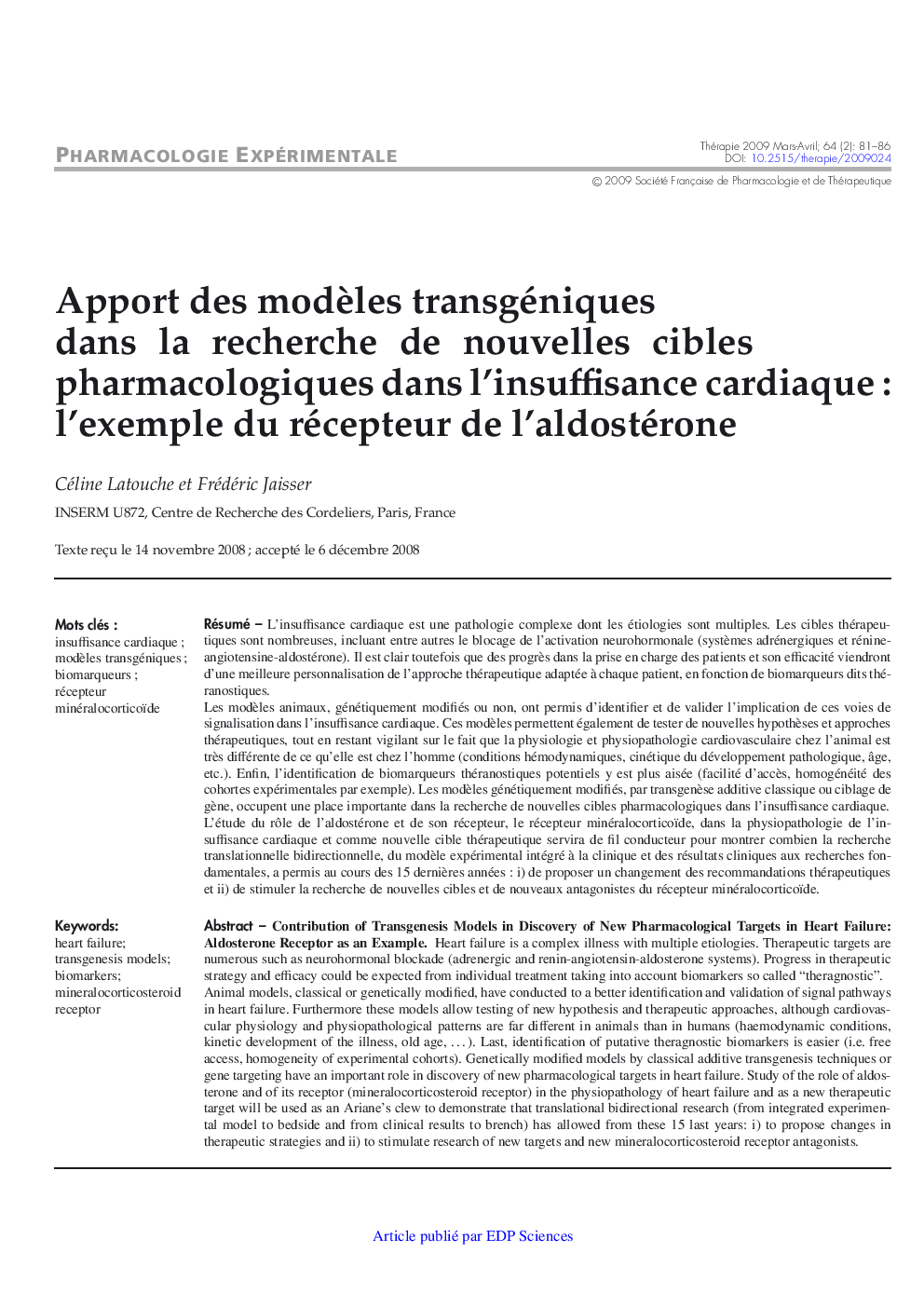| Article ID | Journal | Published Year | Pages | File Type |
|---|---|---|---|---|
| 2579407 | Thérapie | 2009 | 6 Pages |
Abstract
Animal models, classical or genetically modified, have conducted to a better identification and validation of signal pathways in heart failure. Furthermore these models allow testing of new hypothesis and therapeutic approaches, although cardiovascular physiology and physiopathological patterns are far different in animals than in humans (haemodynamic conditions, kinetic development of the illness, old age, â¦). Last, identification of putative theragnostic biomarkers is easier (i.e. free access, homogeneity of experimental cohorts). Genetically modified models by classical additive transgenesis techniques or gene targeting have an important role in discovery of new pharmacological targets in heart failure. Study of the role of aldosterone and of its receptor (mineralocorticosteroid receptor) in the physiopathology of heart failure and as a new therapeutic target will be used as an Ariane's clew to demonstrate that translational bidirectional research (from integrated experimental model to bedside and from clinical results to brench) has allowed from these 15 last years: i) to propose changes in therapeutic strategies and ii) to stimulate research of new targets and new mineralocorticosteroid receptor antagonists.
Related Topics
Health Sciences
Pharmacology, Toxicology and Pharmaceutical Science
Pharmacology, Toxicology and Pharmaceutics (General)
Authors
Céline Latouche, Frédéric Jaisser,
